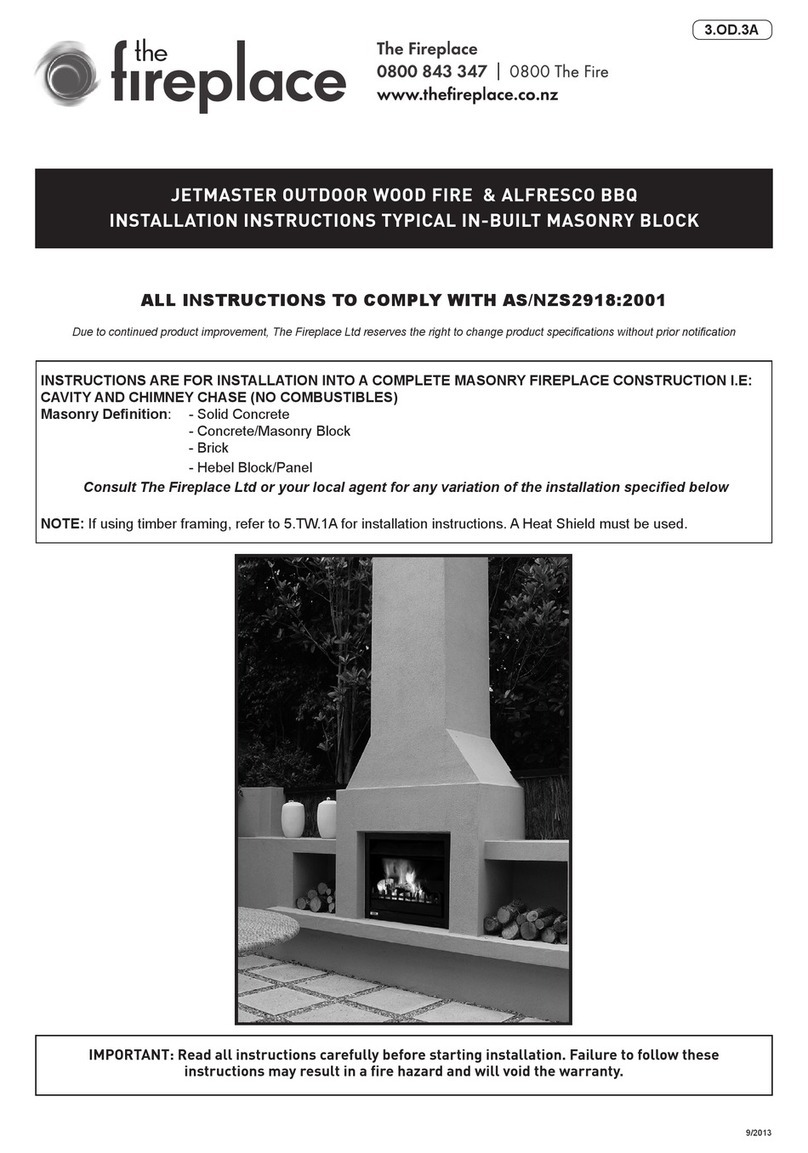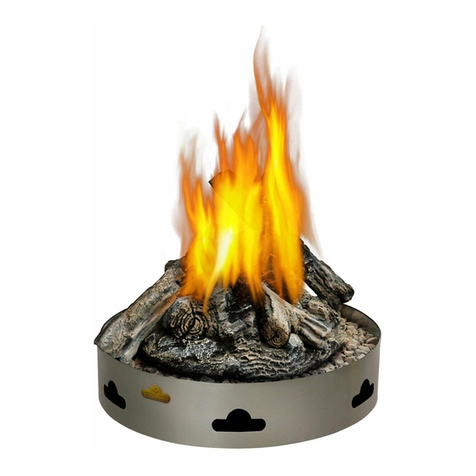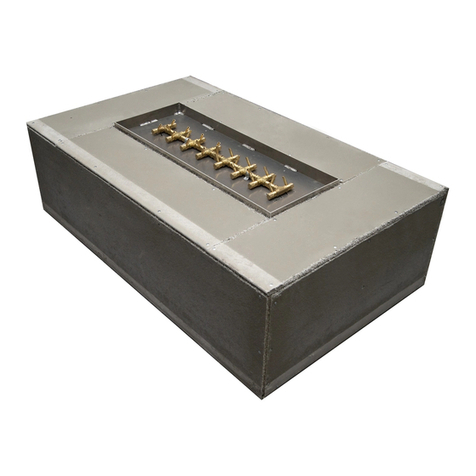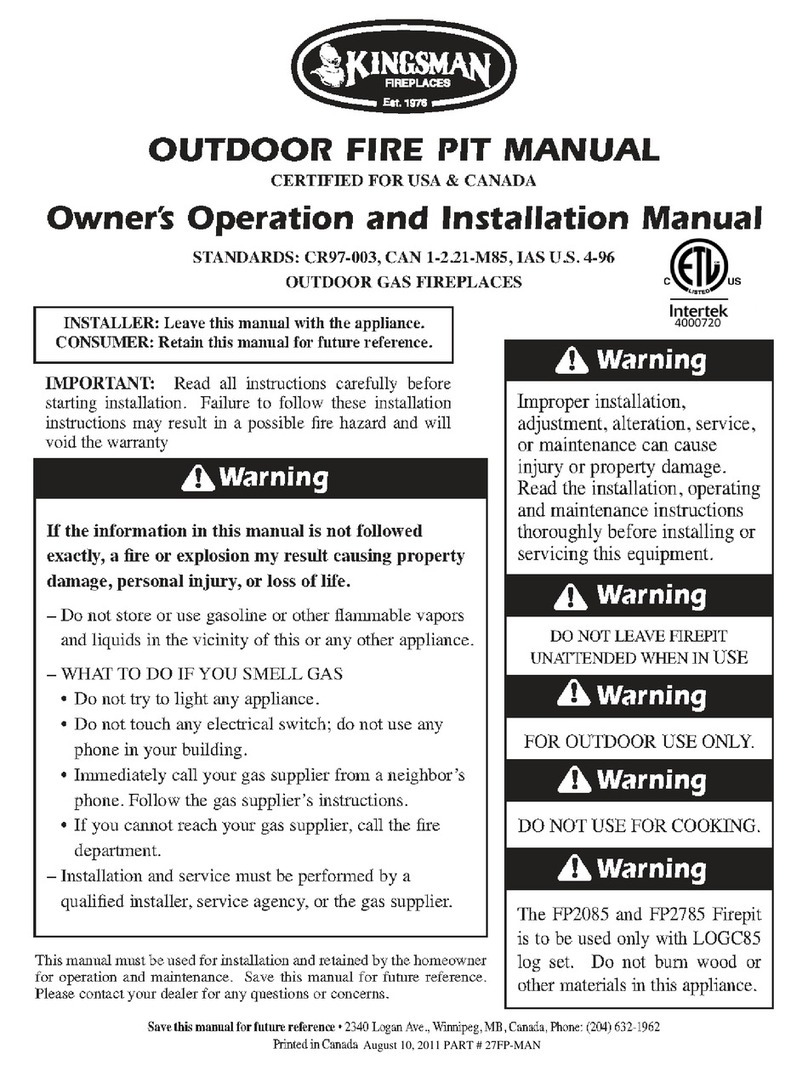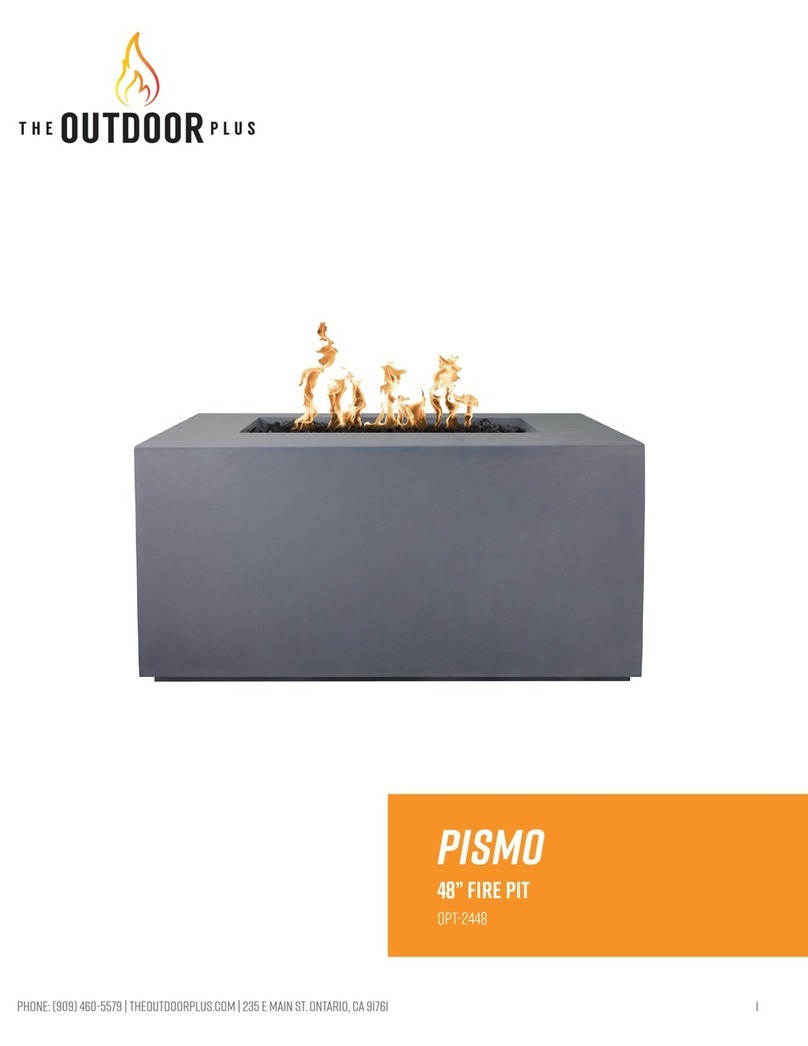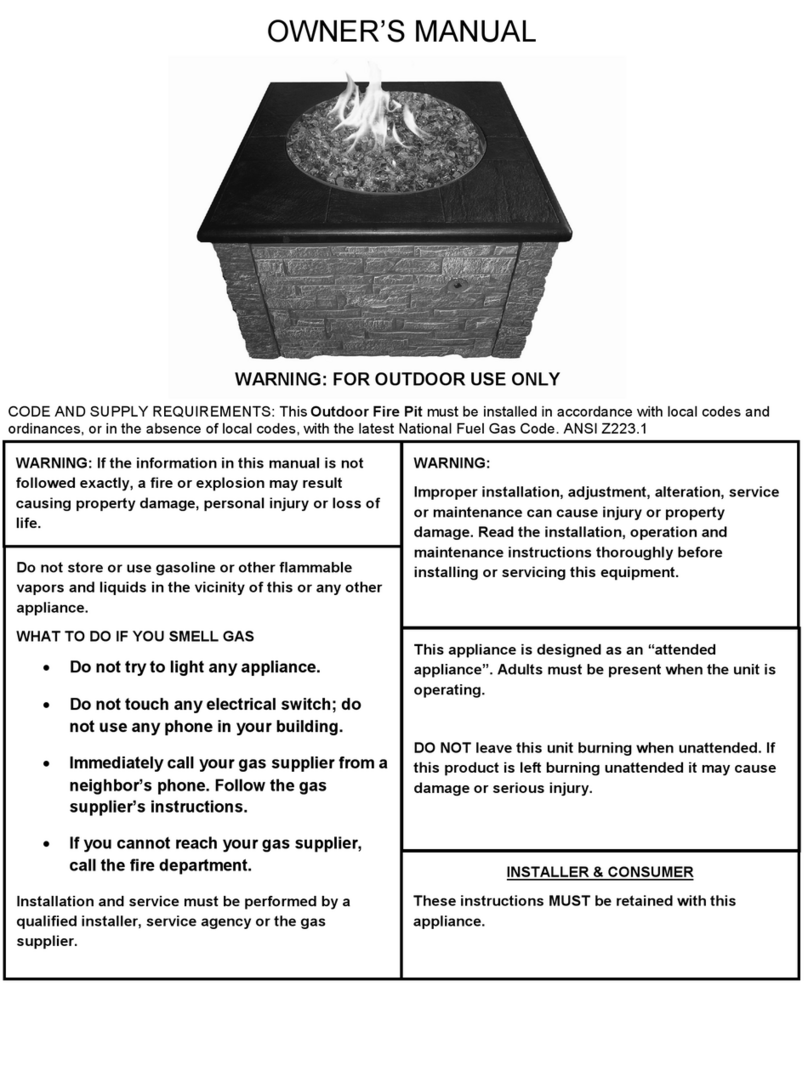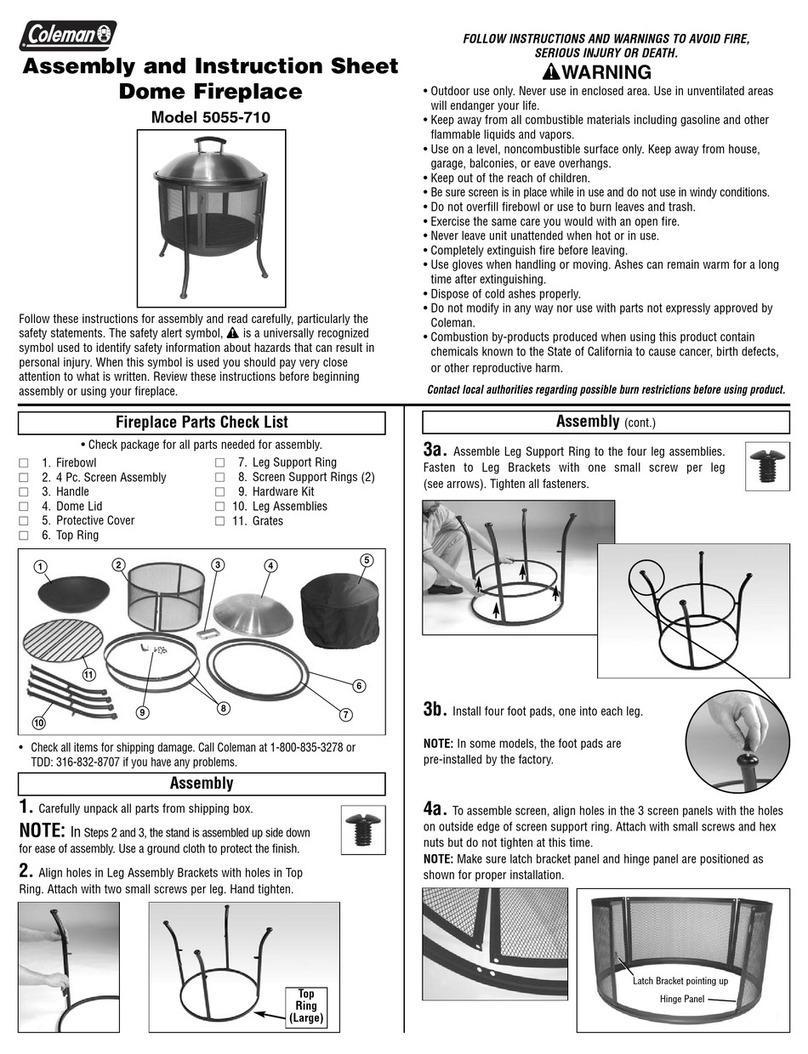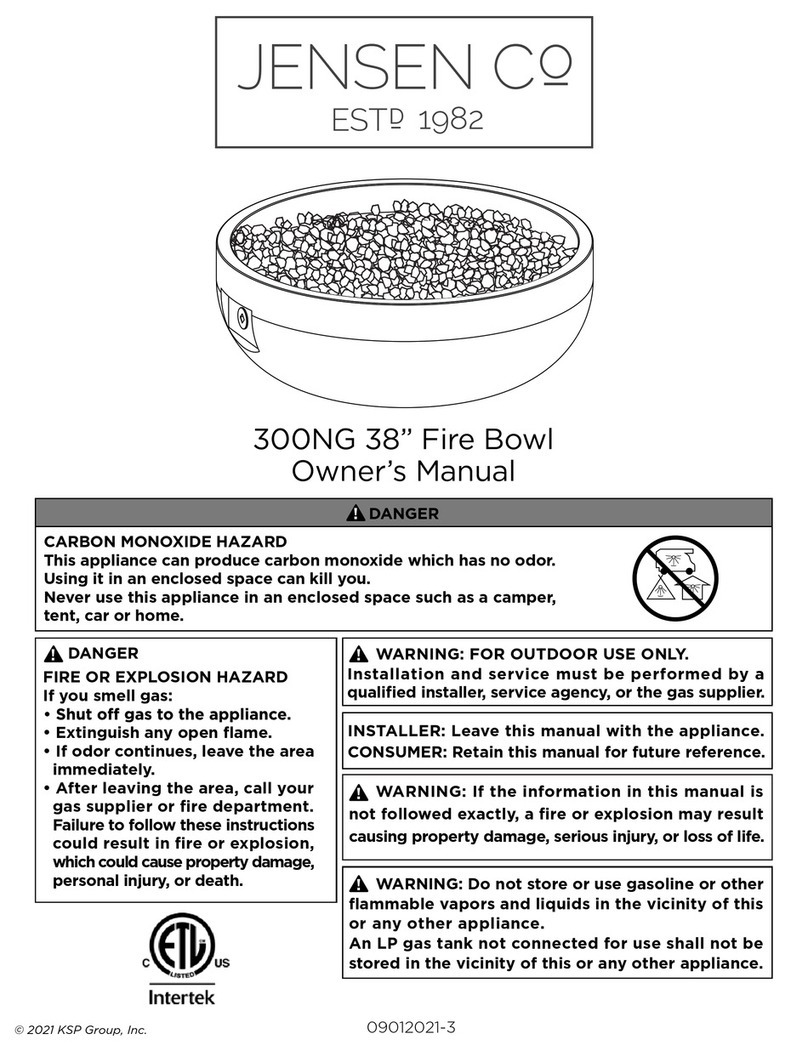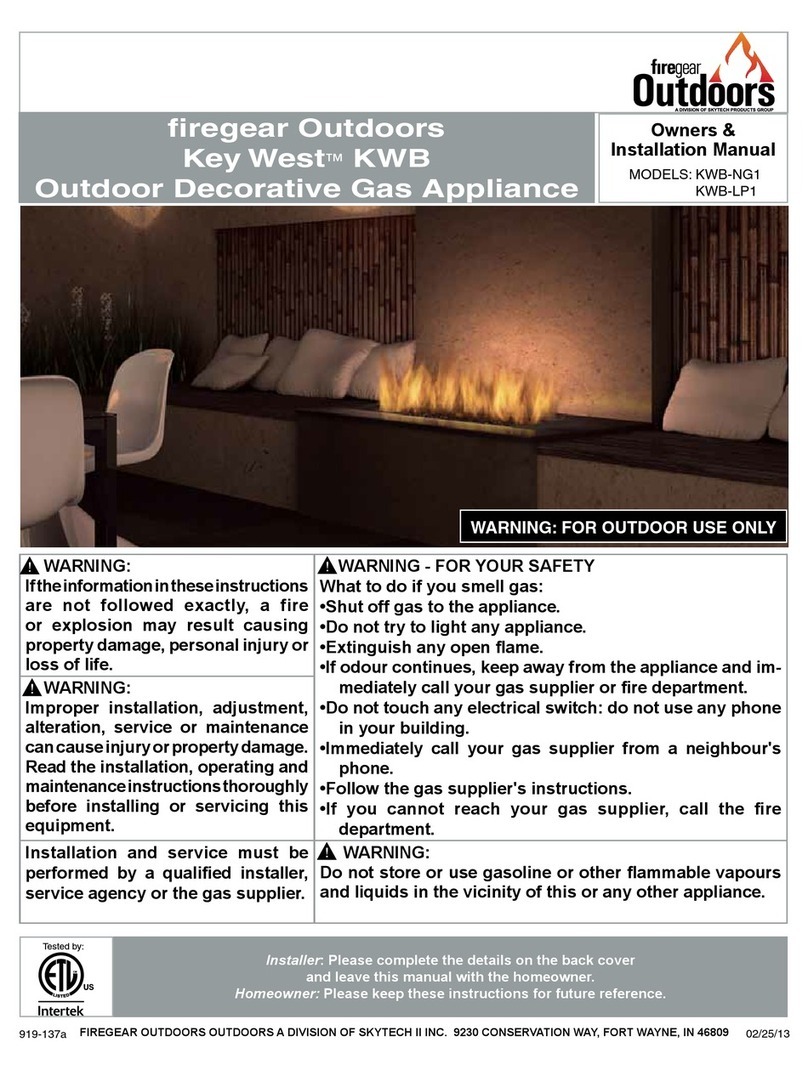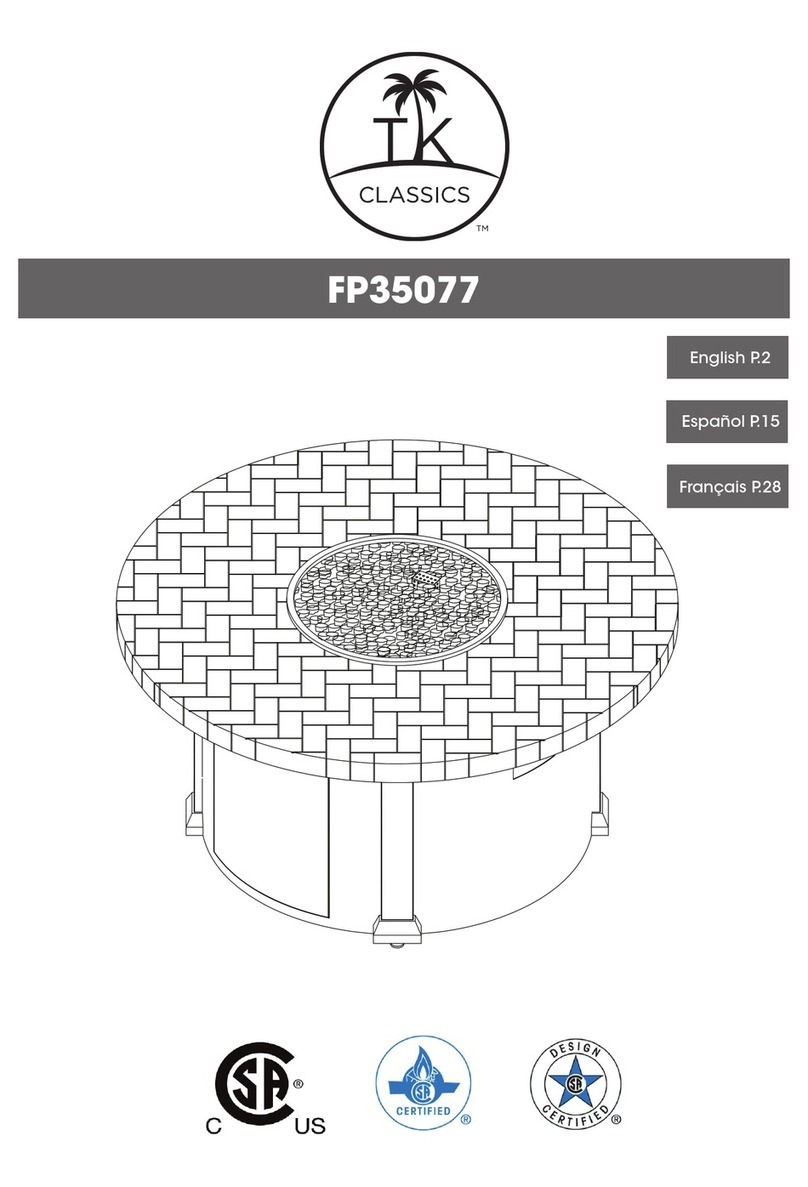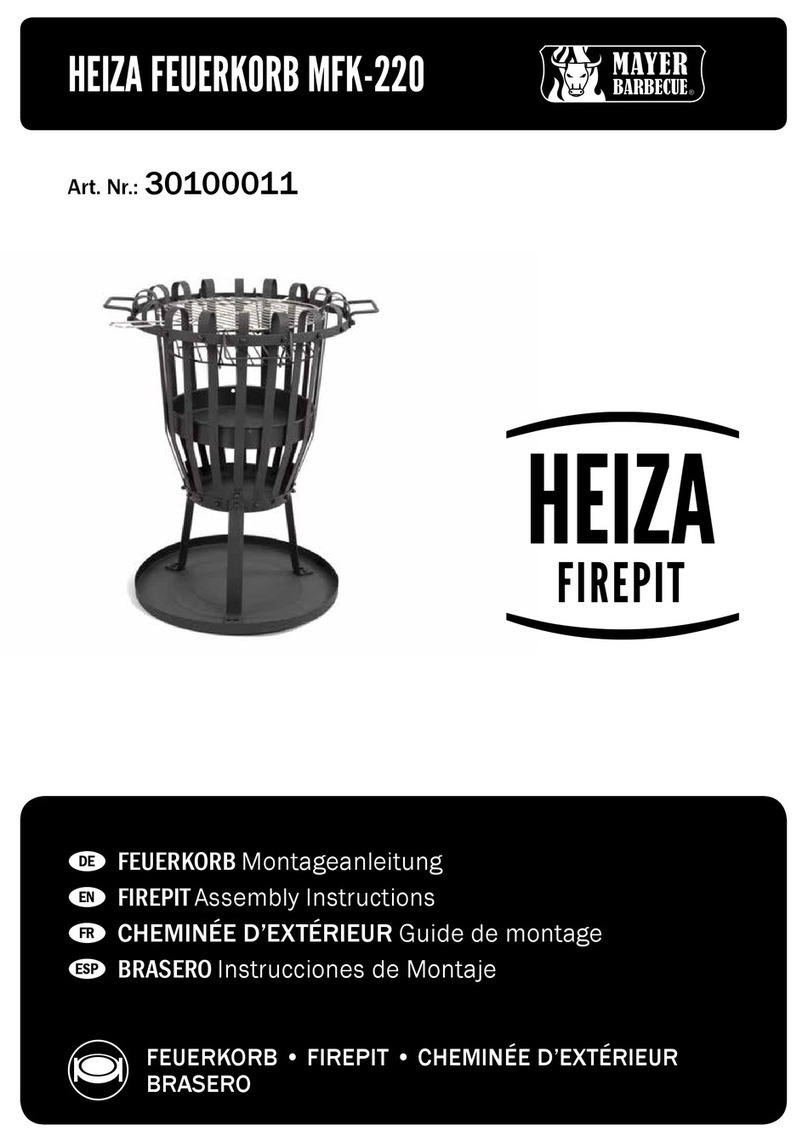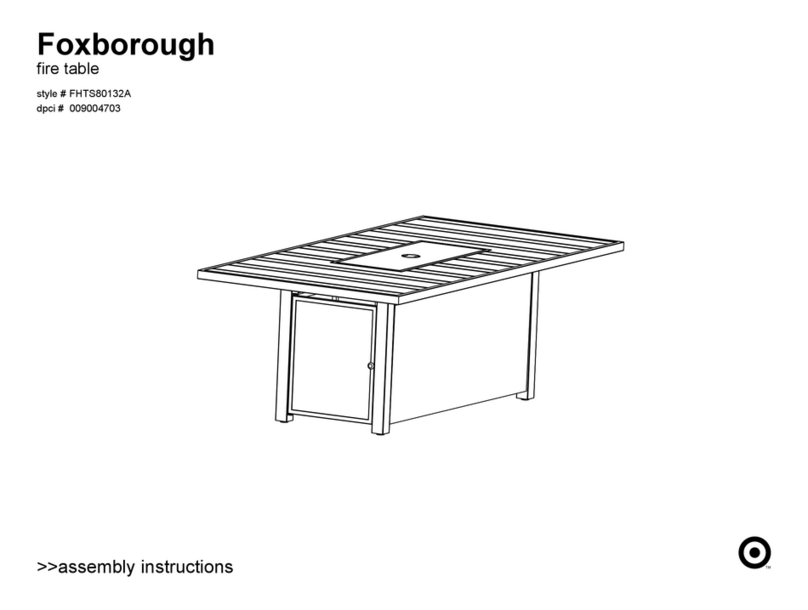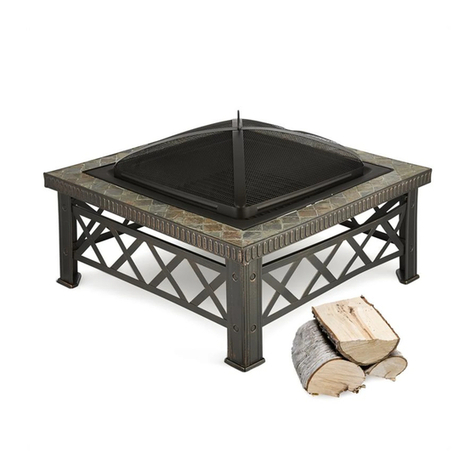
4
General Warnings and Information .......................................................................... 5
Code Requirements ................................................................................................... 6
Minimum and Maximum Gas Inlet Pressures ......................................................... 6
Location Considerations ........................................................................................... 6
Construction of Enclosure ......................................................................................... 7
Clearances Diagram .................................................................................................. 8
General Burner System Installation ......................................................................... 8
Match Lit System Connection Diagrams....................................................... .........10
(249K and below w/ FK1)
Match Lit System Connection Diagrams....................................................... .........12
(250K - 300K+ w/ FK2)
24 Volt Electronic Ignition System Connection Diagrams.......................... .........14
(249K and below w/ FK1)
24 Volt Electronic Ignition System Connection Diagrams.......................... .........16
(250K - 300K+ w/ FK2)
Push Button Ignition System Connection Diagrams............................................. 19
Media Installation ..................................................................................................... 20
Operating Instructions ............................................................................................. 20
FireStormTM Steel Gas Log Owner Information and Installation .......................... 21
General Maintenance............................................................................................... 22
Troubleshooting........................................................................................................ 23
Warranty..................................................................................................................... 24
Prop 65 Warning ....................................................................................................... 25
Replacement Parts .................................................................................................... 26
Compliance with the following codes:
1. 2021, 2018, 2015, 2012, and 2009 International Fire Code® (IFC)
2. 2021, 2018, 2015, 2012, and 2009 International Fuel Gas Code® (IFGC)
3. 2018, 2015, 2012 and 2009 Uniform Mechanical Code® (UMC)*
4. 2020, 2015 and 2010 Natural Gas and Propane Installation Code**
*Uniform Plumbing Code is a copyrighted publication of the International Association of Plumbing and Mechanical Offi cials
**Copyrighted publication of Canadian Standard Association
Compliance with the following standards:
1. ANSI Z21.97/CSA 2.41-2017 Outdoor Decorative Gas Appliances
Product: Outdoor Decorative Gas Fire Pit and Fireplaces
ICC-ES Report PMG-1213
MATCH LIT:
Model # CFB60 NG/LP as match lit
Model # CFB120 NG/LP as match lit
Model # CFB180 NG/LP as match lit
Model # CFB240 NG/LP as match lit
Model # CFB290 NG/LP as match lit
Model # CFBL90 NG/LP as match lit
Model # CFBL110 NG/LP as match lit
Model # CFBL130 NG/LP as match lit
Model # CFBL150 NG/LP as match lit
Model # CFBL170 NG/LP as match lit
Model # CFBL190 NG/LP as match lit
Model # CFBL210 NG/LP as match lit
Model # CFBL250 NG/LP as match lit
Model # CFBL270 NG/LP as match lit
Model # CFBL320 NG/LP as matchlit
Model # CFB60 2XL NG/LP as match lit
Model # CFBH120 NG/LP as match lit
Model # CFBH160 NG/LP as match lit
Model # CFBH200 NG/LP as match lit
Model # CFBH240 NG/LP as match lit
Model # CFBH260 NG/LP as match lit
Model # CFBH300 NG/LP as match lit
Model # CFBH340 NG/LP as match lit
Model # CFBH420 NG/LP as match lit
Model # CFBT110 NG/LP as match lit
Model # CFBT170 NG/LP as match lit
Model # CFBT230 NG/LP as match lit
Model # CFBT290 NG/LP as match lit
Model # CFBT350 NG/LP as match lit
Model # CFBT410 NG/LP as match lit
Model # CFBT470 NG/LP as match lit
Model # CFBO180 NG/LP as match lit
Model # CFBO280 NG/LP as match lit
Model # CFBO360 NG/LP as match lit
Model # WTV40 NG/LP as matchlit
Model # WTV60 NG/LP as matchlit
Model # WTV120 NG/LP as matchlit
Model # WTV120 NG/LP as matchlit
Certi ed Units
24 VOLT STANDARD ELECTRONIC
IGNITION SYSTEMS - Standard Capacity
Model # CFB60 NG/LP with 24VIKSC
Model # CFB120 NG/LP with 24VIKSC
Model # CFB180 NG/LP with 24VIKSC
Model # CFB240 NG/LP with 24VIKSC
Model # CFBL90 NG/LP with 24VIKSC
Model # CFBL110 NG/LP with 24VIKSC
Model # CFBL130 NG/LP with 24VIKSC
Model # CFBL150 NG/LP with 24VIKSC
Model # CFBL190 NG/LP with 24VIKSC
Model # CFB60 2XL NG/LP with 24VIKSC
Model # CFBH120 NG/LP with 24VIKSC
Model # CFBH160 NG/LP with 24VIKSC
Model # CFBH200 NG/LP with 24VIKSC
Model # CFBT110 NG/LP with 24VIKSC
Model # CFBT170 NG/LP with 24VIKSC
Model # CFBO180 NG/LP with 24VIKSC
Model # CFBO280 NG/LP with 24VIKSC
Model # WTV60 NG/LP with 24VIKSC
Model # WTV120 NG/LP with 24VIKSC
Model # WTV180 NG/LP with 24VIKSC
3V BATTERY OPERATED UNITS
Model # CFB60 NG/LP with 3VIK
Model # CFB120 NG/LP with 3VIK
Model # CFB240 NG/LP with 3VIK
Model # CFBL90LP NG/LP with 3VIK
Model # CFBL110LP NG/LP with 3VIK
Model # CFBL130LP NG/LP with 3VIK
Model # CFBL150LP NG/LP with 3VIK
Model # CFBL190LP NG/LP with 3VIK
Model # CFBL210LP NG/LP with 3VIK
Model # CFBL250LP NG/LP with 3VIK
Model # CFB60 2XL NG/LP with 3VIK
Model # CFBH120LP NG/LP with 3VIK
Model # CFBH160LP NG/LP with 3VIK
Model # CFBH200LP NG/LP with 3VIK
Model # CFBH240LP NG/LP with 3VIK
Model # CFBH260LP NG/LP with 3VIK
Model # CFBH300LP NG/LP with 3VIK
Model # CFBH340LP NG/LP with 3VIK
Model # CFBT110LP NG/LP with 3VIK
Model # CFBT170LP NG/LP with 3VIK
Model # CFBT230LP NG/LP with 3VIK
Model # CFBT290LP NG/LP with 3VIK
Model # CFBT350LP NG/LP with 3VIK
Model # CFBT410LP NG/LP with 3VIK
Model # CFBT470LP NG/LP with 3VIK
Model # CFBO180 NG/LP with 3VIK
Model # CFBO280 NG/LP with 3VIK
SPARK IGNITER OPERATED UNITS
Model # WTV40 NG/LP with PBIK
Model # WTV60 NG/LP with PBIK
Model # CFB60 2XL NG/LP with PBIK
Model # CFB60 NG/LP with PBIK
Model # CFB120 NG/LP with PBIK
Model # CFB180 NG/LP with PBIK
Model # CFB290 NG/LP with PBIK
Model # CFBH120 NG/LP with PBIK
Model # CFBH160 NG/LP with PBIK
Model # CFBH200 NG/LP with PBIK
Model # CFBH240 NG/LP with PBIK
Model # CFBH260 NG/LP with PBIK
Model # CFBH300 NG/LP with PBIK
Model # CFBH340 NG/LP with PBIK
Model # CFBH420 NG/LP with PBIK
Model # CFBL90 NG/LP with PBIK
Model # CFBL110 NG/LP with PBIK
Model # CFBL130 NG/LP with PBIK
Model # CFBL150 NG/LP with PBIK
Model # CFBL170 NG/LP with PBIK
Model # CFBL180 NG/LP with PBIK
Model # CFBL210 NG/LP with PBIK
Model # CFBL250 NG/LP with PBIK
Model # CFBL270 NG/LP with PBIK
Model # CFBL320 NG/LP with PBIK
Model # CFBO180 NG/LP with PBIK
Model # CFBO280 NG/LP with PBIK
Model # CFBO360 NG/LP with PBIK
Model # CFBT110 NG/LP with PBIK
Model # CFBT170 NG/LP with PBIK
Model # CFBT230 NG/LP with PBIK
Model # CFBT290 NG/LP with PBIK
Model # WTV180 NG/LP as matchlit
Model # WTVES120 NG/LP as matchlit
Model # WTVES180 NG/LP as matchlit
Model # WT230 NG/LP as matchlit
Model # WTV350 NG/LP as matchlit
24 VOLT STANDARD ELECTRONIC
IGNITION SYSTEMS - High Capacity
Model # CFB240 NG/LP with 24VIKHC
Model # CFB290 NG/LP with 24VIKHC
Model # CFB300 NG/LP with 24VIKHC
Model # CFBL210 NG/LP with 24VIKHC
Model # CFBL250 NG/LP with 24VIKHC
Model # CFBL270 NG/LP with 24VIKHC
Model # CFBL320 NG/LP with 24VIKHC
Model # CFBH240 NG/LP with 24VIKHC
Model # CFBH260 NG/LP with 24VIKHC
Model # CFBH300 NG/LP with 24VIKHC
Model # CFBT350 NG/LP with PBIK
Model # CFBT410 NG/LP with PBIK
Model # CFBT470 NG/LP with PBIK
Model # WTV120 NG/LP with PBIK
Model # WTV180 NG/LP with PBIK
Model # WTVES120 NG/LP with PBIK
Model # WTVES180 NG/LP with PBIK
Model # WTVT230 NG/LP with PBIK
Model # WTVT350 NG/LP with PBIK
Model # CFBO360 NG/LP with 3VIK
Model # WTV60 NG/LP with 3VIK
Model # WTV120 NG/LP with 3VIK
Model # WTV180 NG/LP with 3VIK
